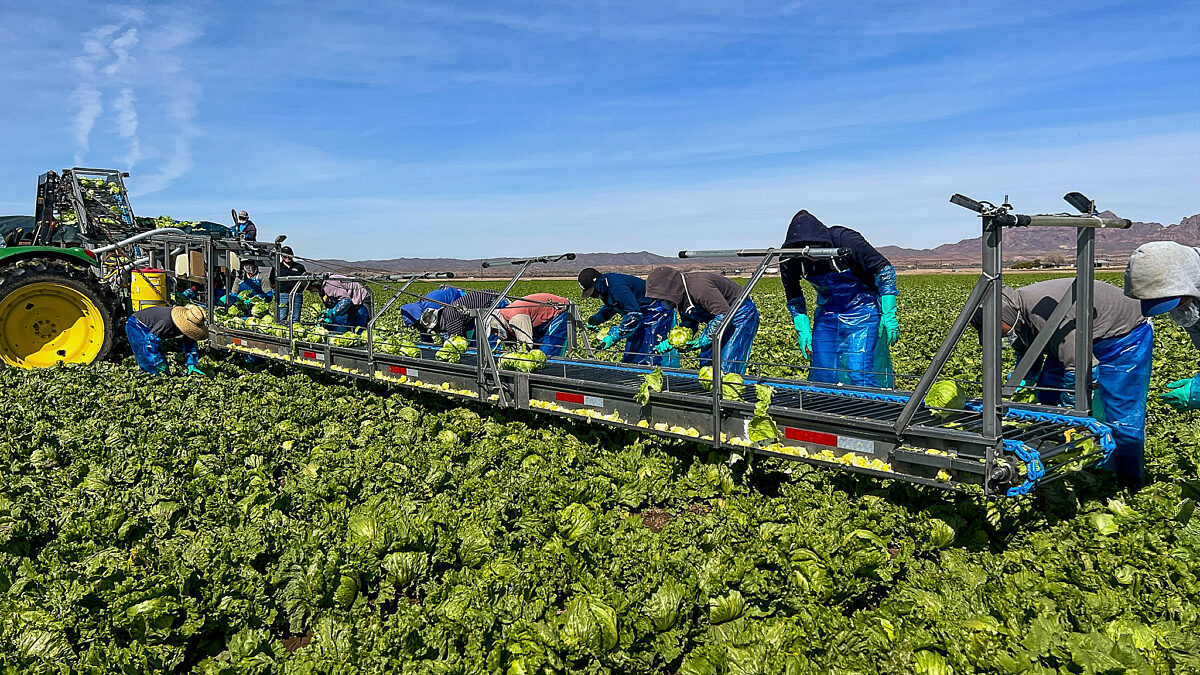America’s Ag Labor System is in Jeopardy
TOPICS
Ag LaborGuest Author
Special Contributor to FB.org

photo credit: AFBF Photo, Terri Moore
Guest Author
Special Contributor to FB.org
By Allison Crittenden @acritty
Grocery stores are the latest battleground for U.S. agriculture as American farmers compete with low-priced foreign imports for shelf space. While foreign competition, especially in the fruit and vegetable industry, is nothing new, the disparity between operating expenses in foreign countries and the United States is significant. This disproportion is due to conditions in the U.S. that force costs upon American farmers that foreign competitors don’t face. Nowhere is this more pronounced than in America’s broken agriculture labor system.
On American farms, labor can account for 48% of variable production costs for fresh fruits and 35% for fresh vegetables. These percentages are even higher for delicate produce like berries.
When it comes to labor availability and costs, American farmers, especially small- and medium-sized growers, are at a critical juncture.
When you look at the difference between farmworker wages in foreign countries and the U.S., it is no surprise that our international competitors can undercut prices in the American marketplace. For example, farmworkers in Mexico are paid an estimated $1.54 per an hour, while the 2019 average for the Adverse Effect Wage Rate, the required wage for our nation’s agricultural guest worker visa program, is $12.96 an hour and is expected to increase again in 2020. Summed up, that means it takes farmworkers in Mexico an entire day to earn what farmworkers in America make in one hour. Because of this, foreign-grown products can be sold in the U.S. much cheaper than the American-grown version, which holds down prices – and profits – for American farmers. This reality puts the future of American labor-intensive agriculture in jeopardy.
When it comes to labor availability and costs, American farmers, especially small- and medium-sized growers, are at a critical juncture. Many don’t see a future in labor-intensive agriculture as the margins between profitability and loss get thinner.
As fewer domestic workers seek farm work, farmers are forced to use the flawed, costly H-2A guest worker visa program to meet their workforce needs. For many, the additional overhead associated with the H-2A program is too much to bear. The complexities of the program result in farmers hiring expensive outside agencies to process H-2A applications. Requirements to provide farmworker housing and transportation from the home country to the farm in the U.S., on top of paying the inflated Adverse Effect Wage Rate, limit competitiveness. As a result, it’s becoming harder for some H-2A growers to make ends meet.
Further, farm consolidation is on the rise, and some large-scale farms are seeking opportunities south of the border to take advantage of lower operating expenses. While those entities can make their own business decisions, our priority at Farm Bureau is American farmers and their ability to find the labor they need at a fair cost.
While this seems like an issue affecting only agriculture, it’s not. As America’s farmers cut back production or go out of business, we become more dependent on imports for our food supply, which can be a matter of national security.
One way to ensure the continuity of a domestically produced food supply and bring relief to American farmers is through reform of the H-2A guest worker program to make it more user-friendly, affordable and reliable. International competition will always be there, but laws and regulations, such as those that govern the H-2A guest worker program and limit American agriculture’s competitiveness, can change. It’s time for Congress to give American farmers the leg up they need to maintain their competitive edge.
Allison Crittenden is director, congressional relations, at the American Farm Bureau Federation.
Trending Topics
VIEW ALL